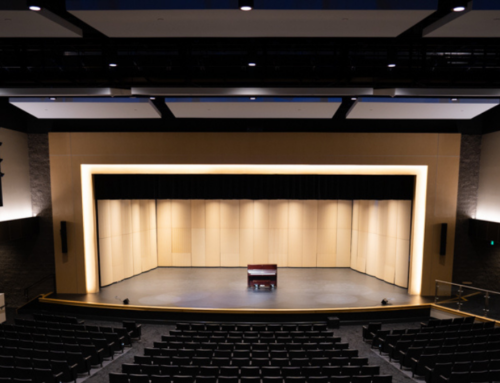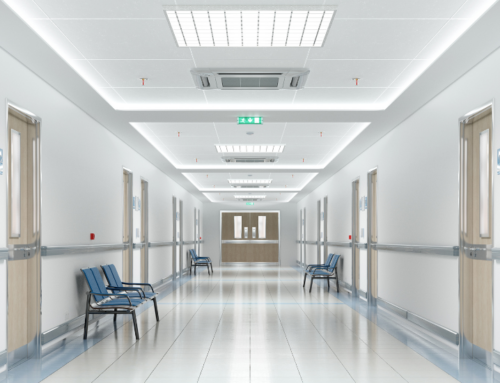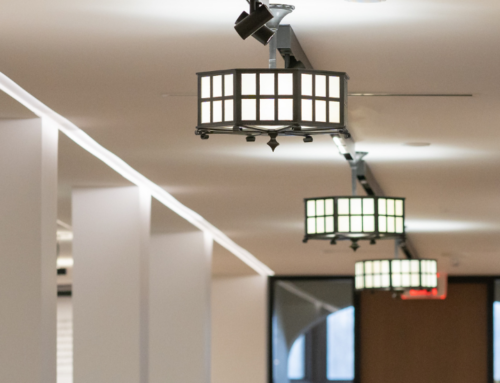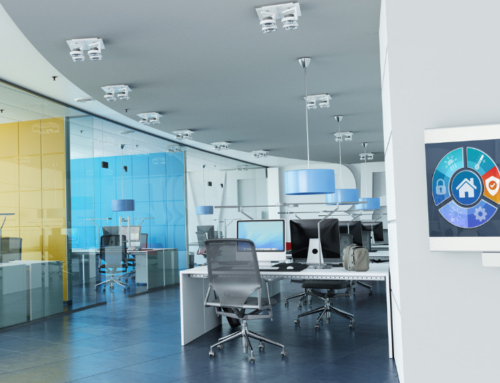If A Tree Falls… Environmental Acoustics
Principal Phil Wentz discusses a multitude of sound sources that surround many facilities – from the innocuous to the obnoxious.
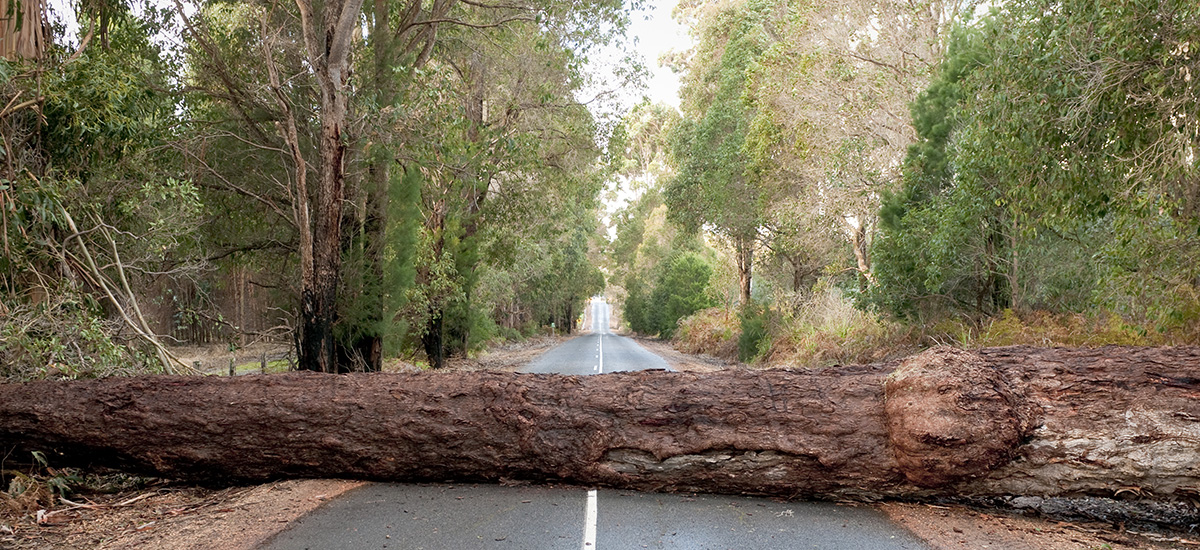
Facility executives are often involved with the unpleasant task of addressing exterior noise around the sites they manage. The facility may be receiving or providing some unwanted noise, and sources can be as innocent as the facility’s ventilation fan to as blatant as heavy metal night at the nearby bar. Exterior noise is often regulated by state and local codes. A well written noise code can minimize litigation and frustration, but a nonexistent code or a poorly written one can lead to wasted time, money, and good will. Exterior noise issues can arise in both new and existing developments, and a change in the source, path, or the receiver can alleviate or aggravate the situation. The philosophical question: If a tree falls and no one is there to hear it can we still complain that it made too much noise when it fell?
Noise is defined as an unpleasant sound. Some typical noise sources include transportation traffic (trains, planes, and automobiles), HVAC equipment noise (air cooled chillers, exhaust fans), ordering stations (drive thru), sports equipment (pitching machine, basketball), nature (insects, waterfalls), and safety equipment (sirens, backup alarms).
Some of the more unusual circumstances which have led to litigation have ranged from noise from a baseball pitching machine in a community to a highway department being sued for the backup alarms that sound when loading salt trucks overnight to prepare for snowstorm. Typically, emergency vehicles and safety alarms are exempt. However, this does not mean that they are not loud and disruptive to those nearby out of harm’s way.
Taming Surrounding Sounds
Environmental noise codes vary greatly. Some states and municipalities do not have codes while others do. The broadest noise code is a nuisance clause; if it bothers someone it is out of compliance. These are hard on the growth of businesses and communities since there are no quantifiable criteria on a successful development. A new building could be completed just to have complaints render it useless. Normally, criteria can be enumerated in a Conditional Use Permit (CUP) to protect both parties by establishing expectations before the project begins.
In my opinion, the best noise codes include a) time of operation (day and night), b) definitions of measurement locations in relation to the property line, c) consideration for existing background sound levels, d) maximum amplitudes/durations, e) requirements based on property usage, and f) simple measurement means to determine compliance. Such codes provide a level playing field for business and community development as well as maintain existing expectations.
Fortunately, there are also guidelines to address exterior noise concerns such as Facility Guidelines Institute (FGI) Sound and Vibration Design Guidelines for Healthcare Facilities; ANSI/ASA S12.60 guidelines for schools; and ANSI/ASHRAE/USGBC/IES 189.1 for Standard for Design of High-Performance Green Buildings. Most of the guidelines incorporate a composite sound isolation calculation to address multiple building materials comprising of the building skin.
If your facility is near a transportation path, consider traffic density and speed. Constant speed is often tolerated and blends into the ambient sounds. However, rapid acceleration and deacceleration such as airports or stop signs are the most noticeable as well as sporadic traffic. Military planes and large trucks are often the loudest.
A lesson was learned during a project when my firm set out to measure the exterior noise isolation of a school adjacent to a major highway. We chose rush hour due to traffic density. Once we arrived, we rescheduled for after lunchtime the following day because cars sitting idle on a highway (as we observed was the case during rush hour) make less noise then cars accelerating to get back to the office and trucks making deliveries (as is the case during the busy lunch hour).
The tolerance of noise depends heavily on ambient environment. Monitoring the ambient noise levels for a week both establishes the background, and catches some interesting patterns. Ambient noise monitoring was used to evaluate a location for a corporate auditorium in an existing building. There was a concern that the nearby dock traffic was going to disrupt the presentations in the new facility. The data indicated that the deliveries were not an issue. However, trucks from the nearby fire station racing down the street a few times per week set the criteria for noise isolation of the wall of windows adjacent to the street.
There are several solutions for exterior noise issues for facility managers to consider.
- Measure existing background noise before the project begins in order to understand impact on the environment.
- Understand the zoning requirements, codes, and concerns of the neighbors. Communication with both the officials and neighbors often can minimize or eliminate legal action.
- Provide distance and natural barriers between sound sources and receivers. It is less expensive to incorporate acoustical mitigation into initial design. Grocery stores want to be near customers in residential areas. Deliveries and trash pickup can be scheduled, but refrigeration equipment needs to run around the clock. By placing this equipment near the center or front of the building, the roof provides a barrier to mitigate noise contribution to neighbors.
- Consolidate different noise sources. For instance, at restaurant drive thrus the ordering station can be positioned on the street side of the building so the building provides an acoustical barrier and road noise overcomes any residual noise from the ordering station.
- Choose quiet equipment. Noise is wasted energy. The difference in cost between quiet and standard equipment often is repaid in energy savings. Increasing the physical size of a cooling tower and providing more fill will lower the fan horsepower and noise. Again, it’s much better to choose quiet equipment up front rather than redesign or apply blankets and walls later.
- Maintain equipment. As equipment wears it can progressively get louder. Rather than cover up the noise and possibly accelerate the failure, invest in the repair or replacement of the equipment.
- Fire truck sirens are supposed to be loud. If you are located near a fire station or other naturally noisy situation, isolate the sound. Exterior walls can be improved by utilizing laminated acoustical glass, walls with additional mass, and acoustical insulation. Also, acoustical barriers can also be erected from rated vinyl, wood, masonry fences, or dirt berms.
It has been estimated that although proactively controlling noise and vibration in initial design may add a small amount to project cost, retrofitting for the same results can increase the cost of the control measures by significantly more. Proactive design is nearly always less expensive than reactive correction.

Phil Wentz, P.E.
Published October 16, 2018 in Facility Executive
Phil Wentz, P.E. is acoustical and audio/visual systems principal at McClure Engineering, a mechanical and electrical consulting engineering firm based in St. Louis, MO. He has 25 years of experience in architectural and environmental acoustics, audio/video system design theatrical design, and electrical distribution. He serves as an expert witness for acoustical and electrical cases.
